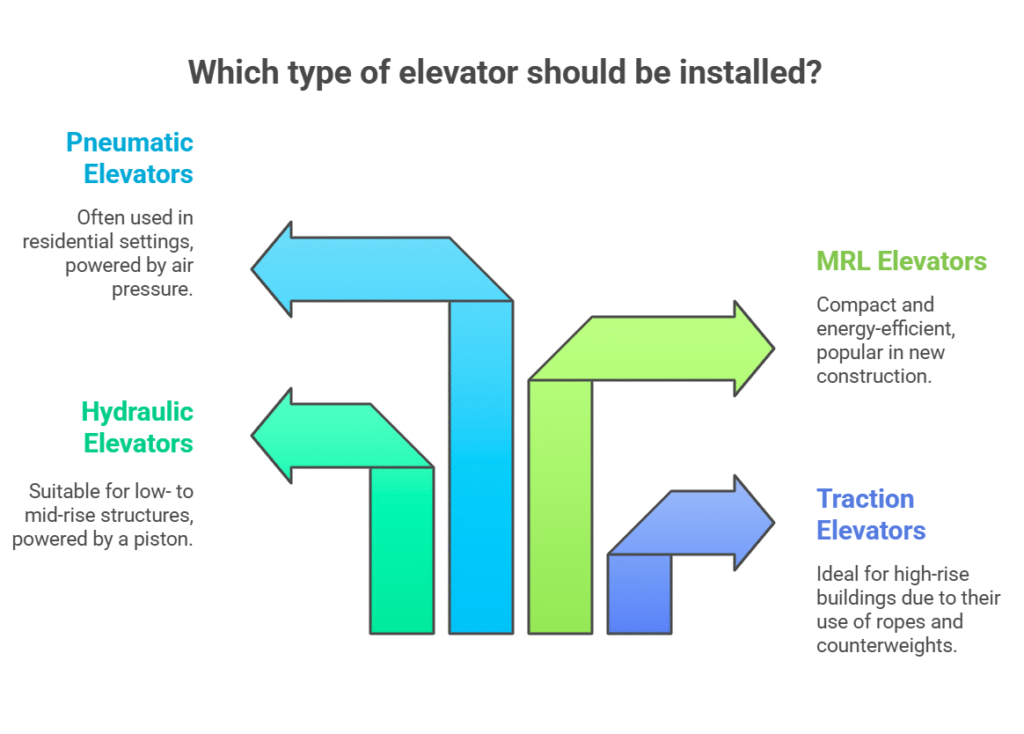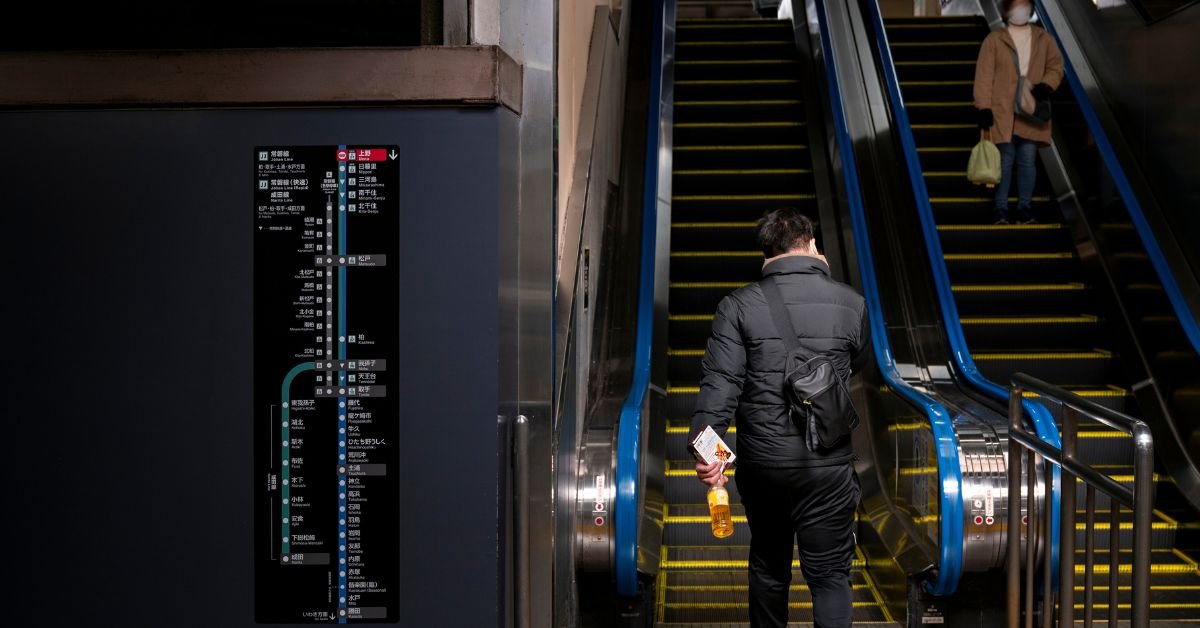When elevators were invented goes back much further than most people think. While the modern elevator as we know it is a product of the 19th century, the concept of vertical transport dates back to ancient civilizations. The Greeks and Romans used primitive hoists powered by humans, animals, or water wheels to lift goods and even people.
The Game-Changer: Elisha Otis and the Safety Brake
Fast forward to the 1850s, and the world was on the brink of a vertical revolution. In 1852, Elisha Otis, an American inventor, introduced a safety device that would change everything: the elevator safety brake. Before Otis, elevators were considered too dangerous for people. If the hoisting rope snapped, the platform would plummet.
Otis’s invention stopped the elevator from falling if the rope broke, making passenger elevators a practical reality. In 1854, he famously demonstrated his safety brake at the Crystal Palace Exhibition in New York, stunning the crowd by cutting the elevator’s rope and letting the brake do its job. The rest, as they say, is history.
The First Modern Elevator: A Leap Into the Future
The First Commercial Passenger Elevator
So, when were elevators invented for everyday use? The first commercial passenger elevator was installed in 1857 at the E.V. Haughwout Building in New York City. Powered by steam, this elevator could carry customers up five stories—a true marvel at the time.
This breakthrough paved the way for taller buildings and, eventually, the skyscrapers that define modern cities. Without elevators, the skyline of New York, Dubai, or Shanghai would look very different.
The Evolution of the Elevator Shaft
With the rise of elevators came the need for a dedicated space within buildings: the elevator shaft. Early shafts were simple vertical passages, but as technology advanced, so did their design. Today, elevator shafts are engineered for safety, speed, and efficiency, often housing multiple elevator types in a single building.
Elevator Types: From Steam to Smart
Old Elevators: A Glimpse Into the Past
If you’ve ever ridden in an old elevator—the kind with ornate metalwork, a manual gate, and a clunky lever—you know there’s a certain charm to these relics. Many historic hotels and buildings still maintain their original elevators, offering a nostalgic ride back in time.
One user once shared, “I love the old elevator in my grandmother’s building. It creaks and groans, but it’s like stepping into a piece of history every time I visit.”
The Rise of Electric Elevators
The next big leap came in the late 1800s with the invention of the electric elevator. In 1880, German inventor Werner von Siemens built the first electric elevator, which quickly replaced steam and hydraulic systems. Electric elevators were faster, more reliable, and could reach greater heights.
Modern Elevator Types
Today, there are several elevator types to suit different needs:
- Traction Elevators: Use ropes and counterweights, ideal for high-rise buildings.
- Hydraulic Elevators: Powered by a piston, common in low- to mid-rise structures.
- Machine-Room-Less (MRL) Elevators: Compact and energy-efficient, popular in new construction.
- Pneumatic Elevators: Use air pressure, often found in residential settings.
Each type has its pros and cons, depending on the building’s height, usage, and budget.

Construction Elevators: Building the Future
The Unsung Heroes of Skyscraper Construction
When you think about when elevators were invented, it’s easy to forget the role of construction elevators. These temporary lifts are essential for moving workers and materials up and down during the building process. Without them, constructing tall buildings would be slow, dangerous, and expensive.
Construction elevators are rugged, open-cage lifts that can be attached to the outside of a building. They’re designed for heavy loads and tough conditions, making them a vital part of any major construction project.
Safety and Innovation
Modern construction elevators are equipped with advanced safety features, including emergency brakes, overload sensors, and secure doors. As building heights continue to soar, these elevators are evolving to meet new challenges.
The Old Elevator Experience: Nostalgia Meets Function
Why Old Elevators Still Matter
There’s something magical about stepping into an old elevator. The polished brass, the clatter of gears, the slow ascent—it’s a reminder of how far we’ve come. Many cities have preserved these elevators as part of their architectural heritage.
But old elevators aren’t just about nostalgia. They also highlight the importance of regular maintenance and safety upgrades. In some cases, retrofitting an old elevator with modern technology can extend its life while preserving its historic charm.
Risks and Rewards
Riding in an old elevator can be a unique experience, but it’s not without risks. Older systems may lack modern safety features, and parts can be hard to find. However, with proper care, these elevators can continue to serve for decades.
Elevators in 2025: Smarter, Safer, and More Sustainable
The Smart Elevator Revolution
In 2025, elevators are smarter than ever. Touchless controls, AI-powered dispatch systems, and real-time monitoring are becoming standard. These innovations improve efficiency, reduce wait times, and enhance safety.
Sustainability in Elevator Design
Modern elevators are also more eco-friendly. Regenerative drives, energy-efficient lighting, and sustainable materials are now common features. As cities aim for greener buildings, elevators play a key role in reducing energy consumption.
Accessibility and Usability
Today’s elevators are designed with everyone in mind. Features like voice controls, braille buttons, and wide doors make elevators accessible to people of all abilities. This focus on usability ensures that elevators continue to serve as a vital part of urban life.
Real-Life Example: The Empire State Building’s Elevators
No discussion of when elevators were invented would be complete without mentioning the Empire State Building. When it opened in 1931, its high-speed elevators were a marvel of engineering, whisking visitors to the 86th floor in under a minute.
Over the years, the building’s elevators have been upgraded with the latest technology, but the original elevator shafts remain—a testament to the enduring importance of good design.
User Voices: Elevators in Everyday Life
Elevators aren’t just machines; they’re part of our daily routines. One user recently shared, “I never realized how much I rely on elevators until ours broke down for a week. Climbing ten flights of stairs every day really makes you appreciate the technology!”
It’s a sentiment many can relate to. Elevators may be taken for granted, but they’re essential to modern living.
The Pros and Cons of Elevator Technology
Pros
- Convenience: Elevators make tall buildings accessible to everyone.
- Safety: Modern elevators are among the safest forms of transportation.
- Efficiency: High-speed elevators save time and boost productivity.
- Accessibility: Elevators provide vital mobility for people with disabilities.
Cons
- Maintenance: Elevators require regular upkeep to stay safe and reliable.
- Cost: Installation and upgrades can be expensive.
- Downtime: When elevators break down, it can disrupt daily life.
Elevator Shafts: The Backbone of Vertical Transport
How Elevator Shafts Work
An elevator shaft is more than just a vertical tunnel. It’s a carefully engineered space that houses the elevator car, counterweights, cables, and safety systems. The design of the shaft affects everything from ride quality to building safety.
Innovations in Shaft Design
In recent years, innovations like double-decker elevators and multi-directional shafts have pushed the boundaries of what’s possible. These advances allow for more efficient use of space and faster travel in super-tall buildings.
Elevator Types: Choosing the Right Lift
Traction vs. Hydraulic
When selecting an elevator, building owners must consider factors like height, usage, and budget. Traction elevators are best for high-rises, while hydraulic elevators are ideal for shorter buildings.
New Elevator Types in 2025
Emerging technologies like magnetic levitation and cable-free elevators are on the horizon, promising even greater speed and flexibility. These innovations could redefine what’s possible in vertical transport.
Construction Elevators: Essential for Modern Building
The Role of Construction Elevators
Construction elevators are the workhorses of the building industry. They move people and materials quickly and safely, keeping projects on schedule.
Safety Considerations
Safety is paramount. Modern construction elevators are equipped with multiple fail-safes, regular inspections, and strict operating protocols to protect workers.
Old Elevators: Preserving the Past
Restoring Historic Elevators
Many cities are investing in the restoration of old elevators as part of their cultural heritage. These projects balance the need for safety with the desire to preserve history.
The Value of Experience
Riding in an old elevator is more than just transportation—it’s an experience. For many, it’s a tangible link to the past.
FAQs
Q. Who invented the first modern elevator?
A. Elisha Otis is credited with inventing the first modern elevator safety brake in 1852, making passenger elevators safe and practical.
Q. What are the main elevator types used today?
A. The main elevator types include traction elevators, hydraulic elevators, machine-room-less (MRL) elevators, and pneumatic elevators. Each type is suited to different building needs
Q. How does an elevator shaft work?
A. An elevator shaft is a vertical passage that houses the elevator car, cables, and safety systems. It’s designed for smooth, safe, and efficient movement between floors.
Q. What is a construction elevator used for?
A. construction elevator is a temporary lift used on building sites to transport workers and materials. It’s essential for efficient and safe construction, especially in tall buildings.
Conclusion
The story of when elevators were invented is more than just a tale of technology. It’s a story of human ingenuity, ambition, and the drive to reach new heights—literally. From ancient hoists to smart elevators in 2025, the journey has been remarkable.
CLICK HERE FOR MORE BLOG POSTS
John Authers is a seasoned and respected writer whose work reflects the tone, clarity, and emotional intelligence that readers value in 2025. His writing blends deep insight with a natural, human voice—making complex ideas feel relatable and engaging. Every piece he crafts feels thoughtful, original, and genuinely worth reading.

